
This low-energy design and build project involved an initial exploration of two completely different approaches. The end result was a beautiful split-level building with an airy interior and uplifting views.
Having purchased a bungalow for its spectacular location with breath taking views towards the Bristol channel, our client was torn between a comprehensive remodel and a knock down and re-build. We explored the financial, aesthetic and lifestyle implications of both eventualities to help clarify in our clients’ mind their preferred direction.
Currently in the UK, while VAT is levied on most forms of refurbishment and renovation, new builds aren’t equally taxed. There’s a growing movement (as evidenced by Architects’ Journal’s ‘retrofirst’ campaign) to reduce VAT on ‘deep green’ retrofit projects, though this remains an ongoing battle.
Furthermore, a rebuild would allow for repositioning of the building on the sloping, triangular plot, providing generous exterior spaces and views across the valley.
We never demolish an existing building lightly – even a poorly performing bungalow with minimal architectural merit. But despite some remodel options which may have been interesting to explore, in this case the situational realities of position, space, performance, quality and budget all weighed heavily against the argument for re-use.
Central to the brief were the creation of a welcoming entrance, a generous, private garden and efficient building with as small an environmental footprint as possible.
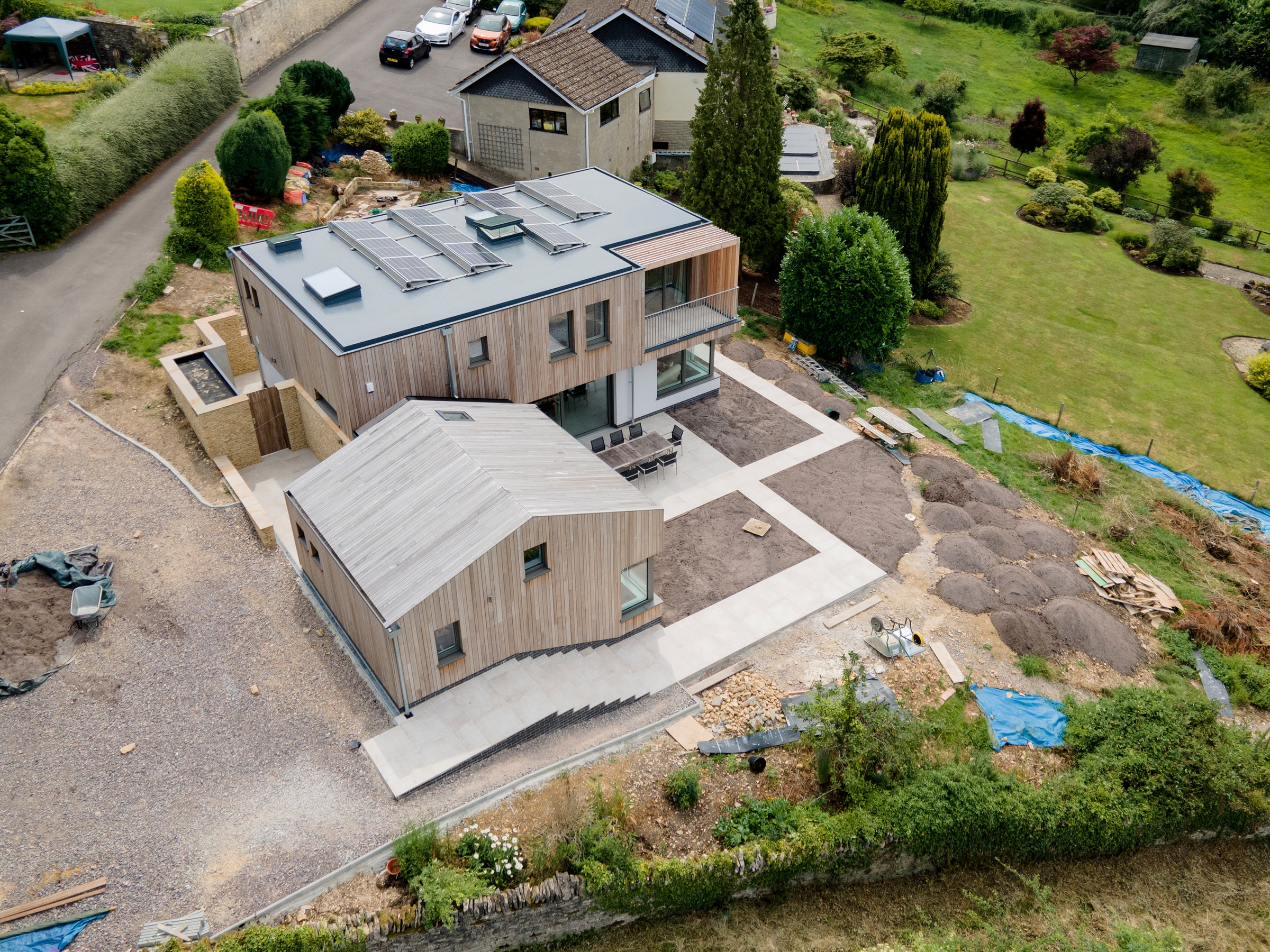

Passivhaus principles and full PHPP modelling were the driving force behind the technical element of the design, comprising insulation, airtightness, reduced overheating risk and cold-bridge elimination, MVHR, Solar PV and Airsource heat pump – as well as the pallet of wood-based materials which have become a staple of our buildings.
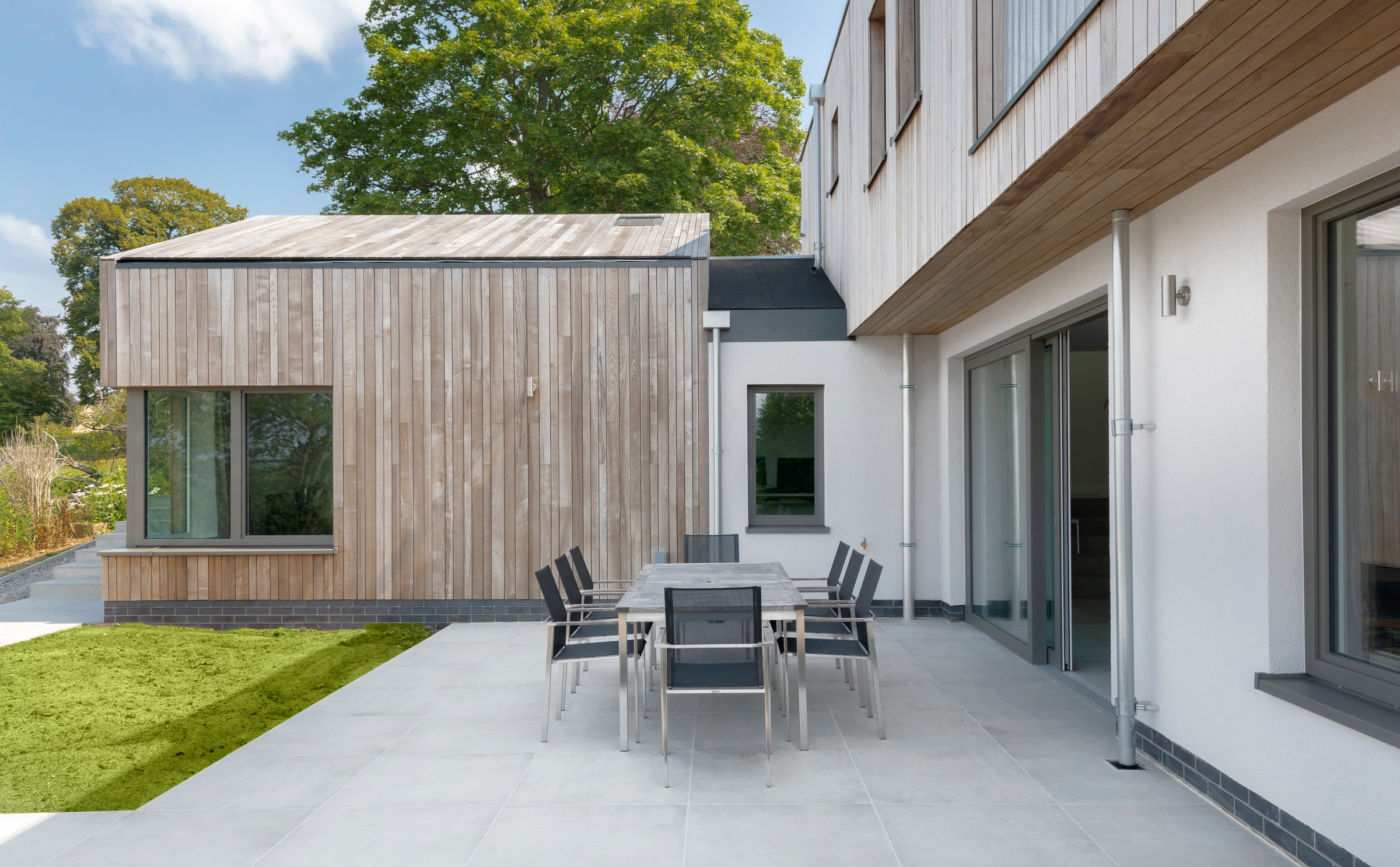
A flat roof was the subject of detailed discussion with building control. Unvented cold-roof construction is common on the continent but unconventional in the UK, and as such required WUFI modelling to prove the condensation risk was acceptably low. The magic of the ‘variable diffusion membrane’ (Intello Plus in this case), combined with a dark single-ply membrane roof covering was the enabling factor.
The finished two-storey house is only around 300mm higher than the ridge of the existing bungalow. A relatively simple footprint was brought to life when considering the slope of the plot, which lead naturally to a split-level arrangement providing a 1.5 story high entrance lobby at upper ground floor. On arrival at the stairwell, one is greeted by an overview of the open plan living and dining space, with teasing glimpses of the exterior and views to the South West.
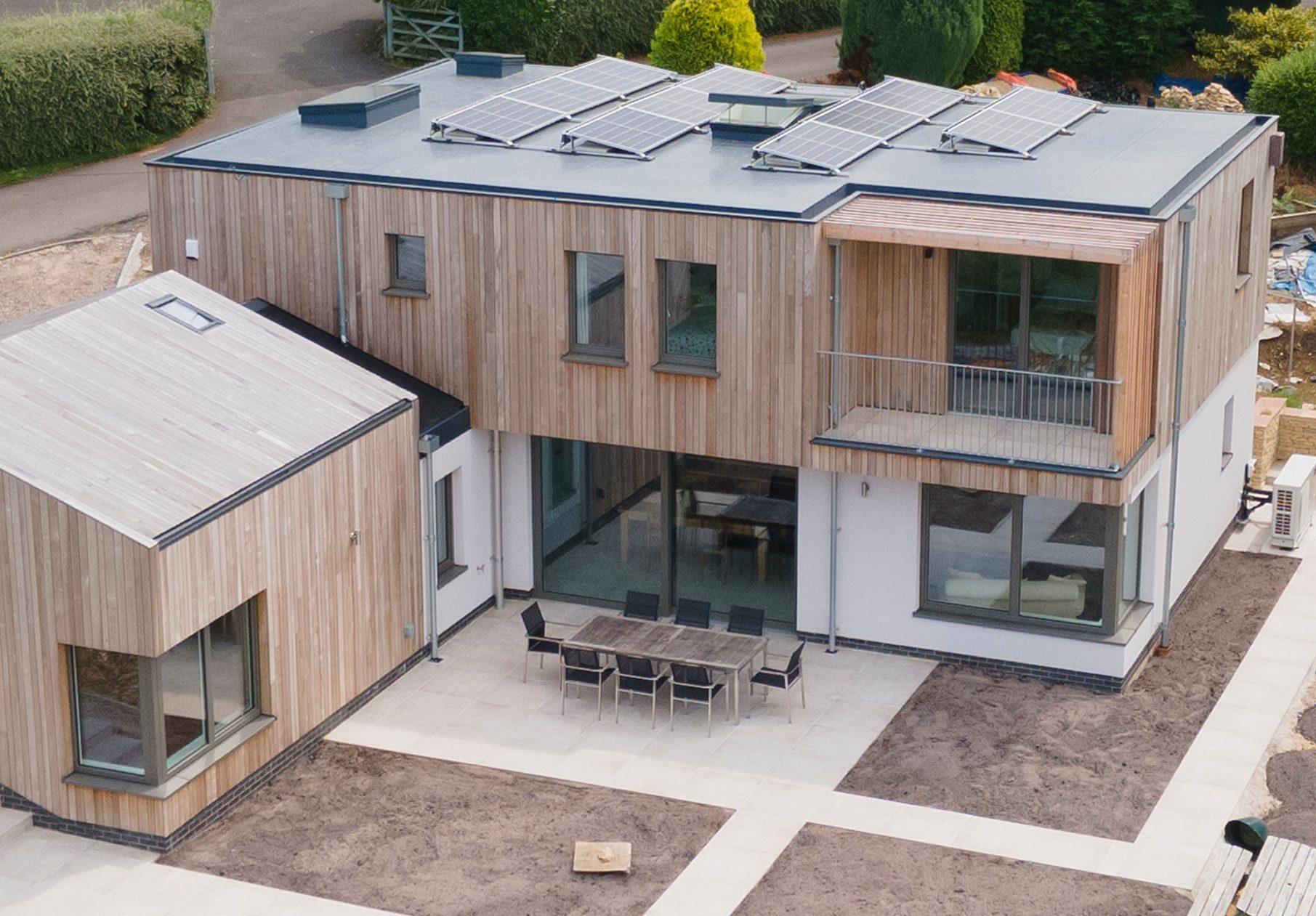
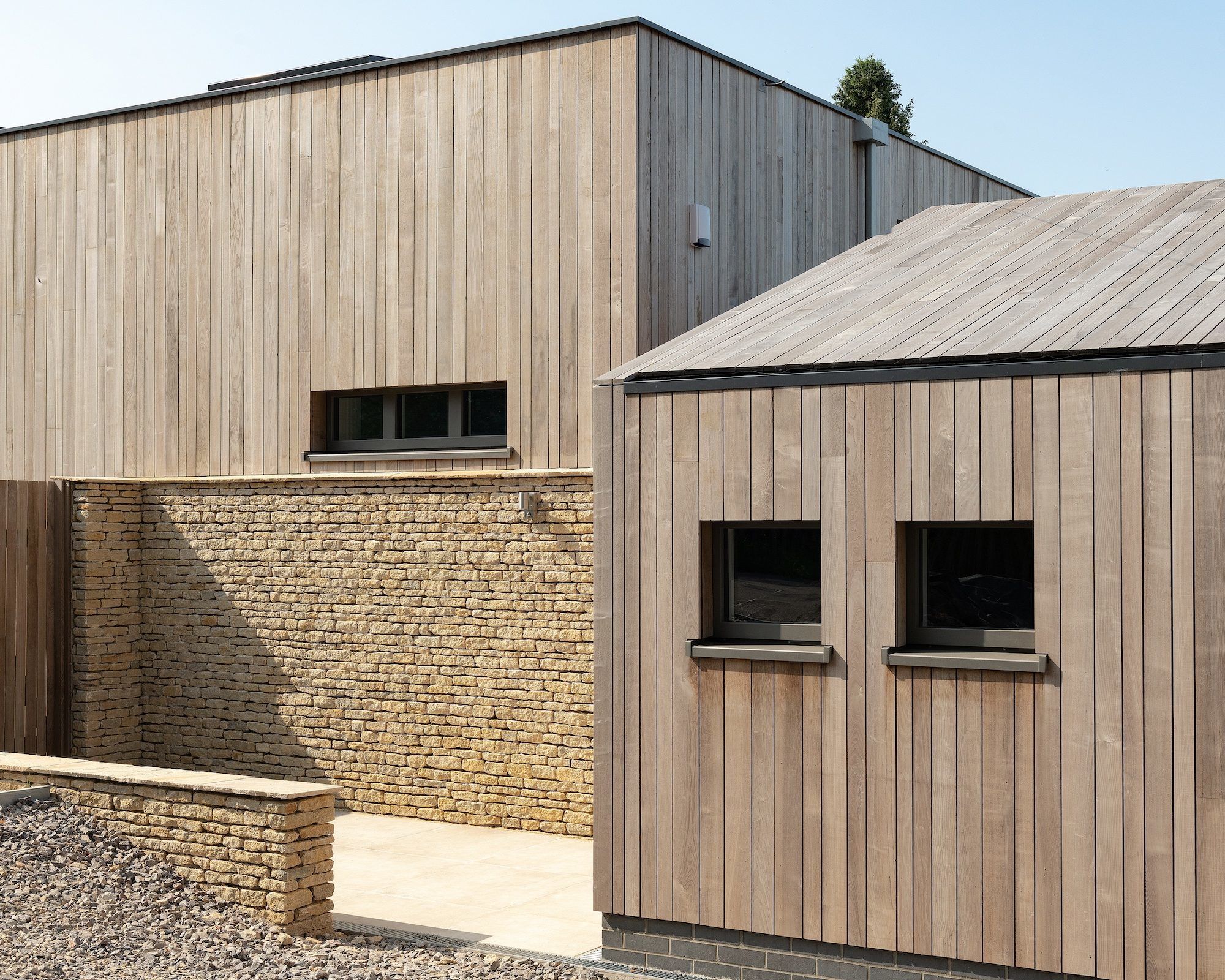



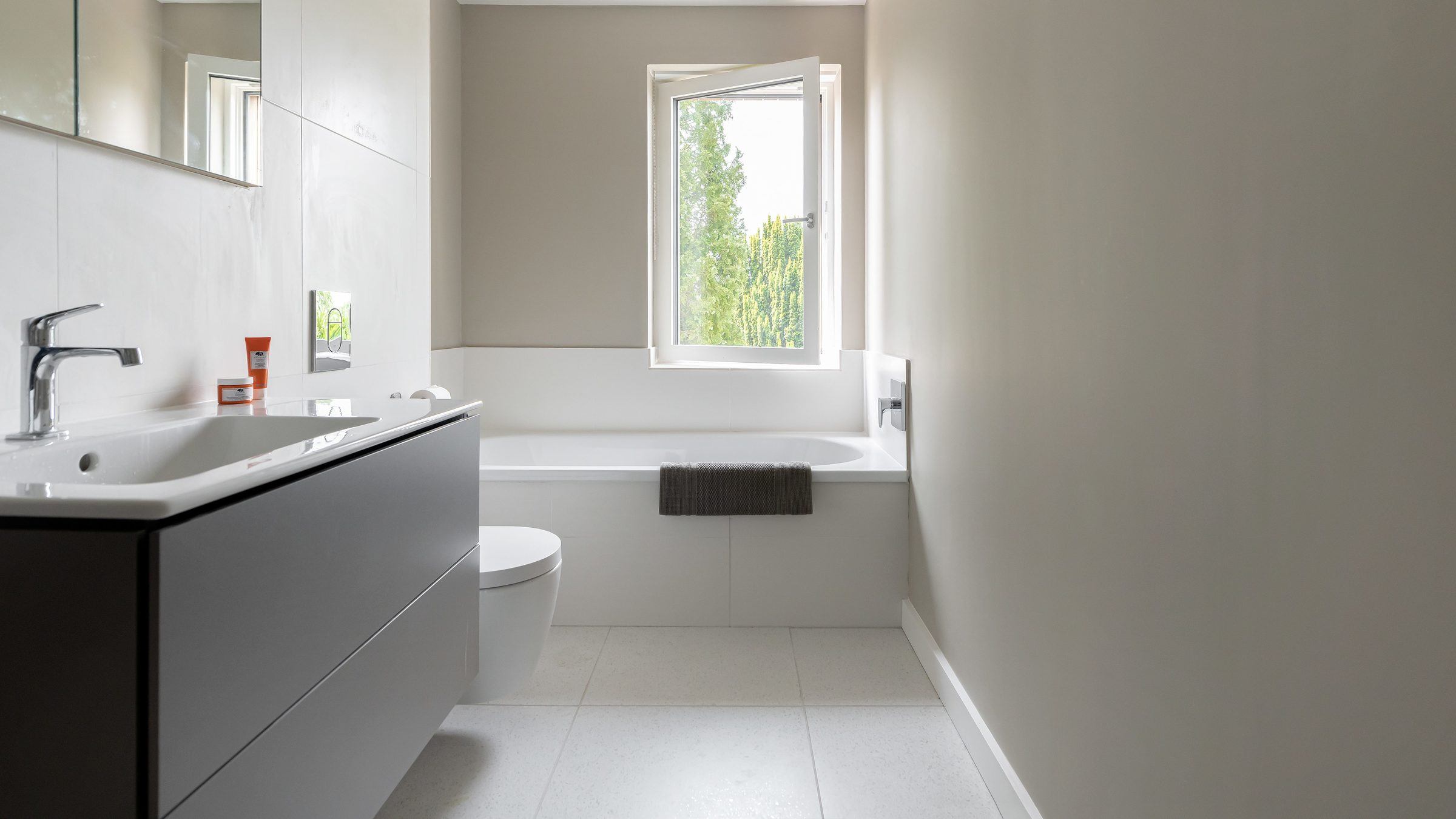
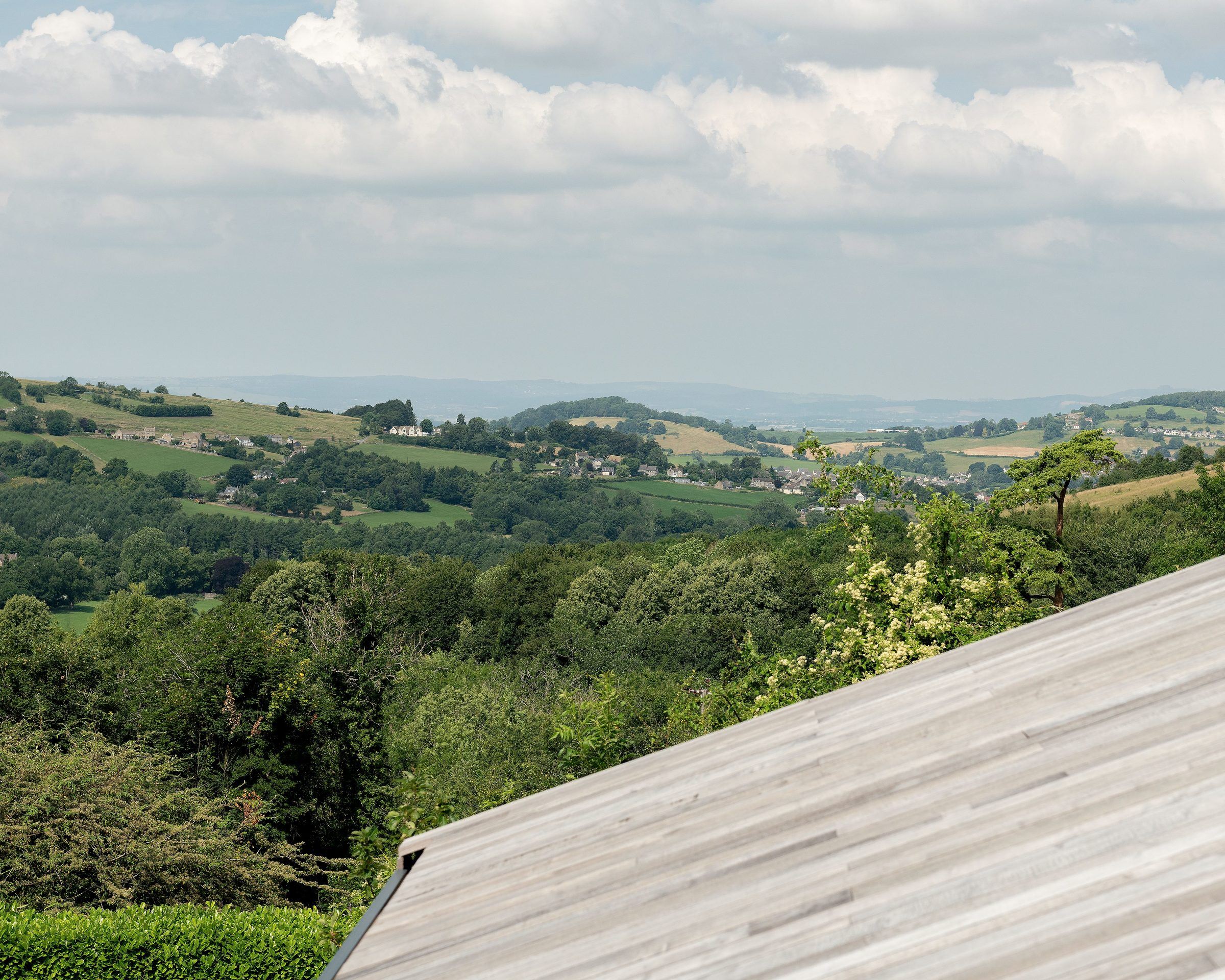
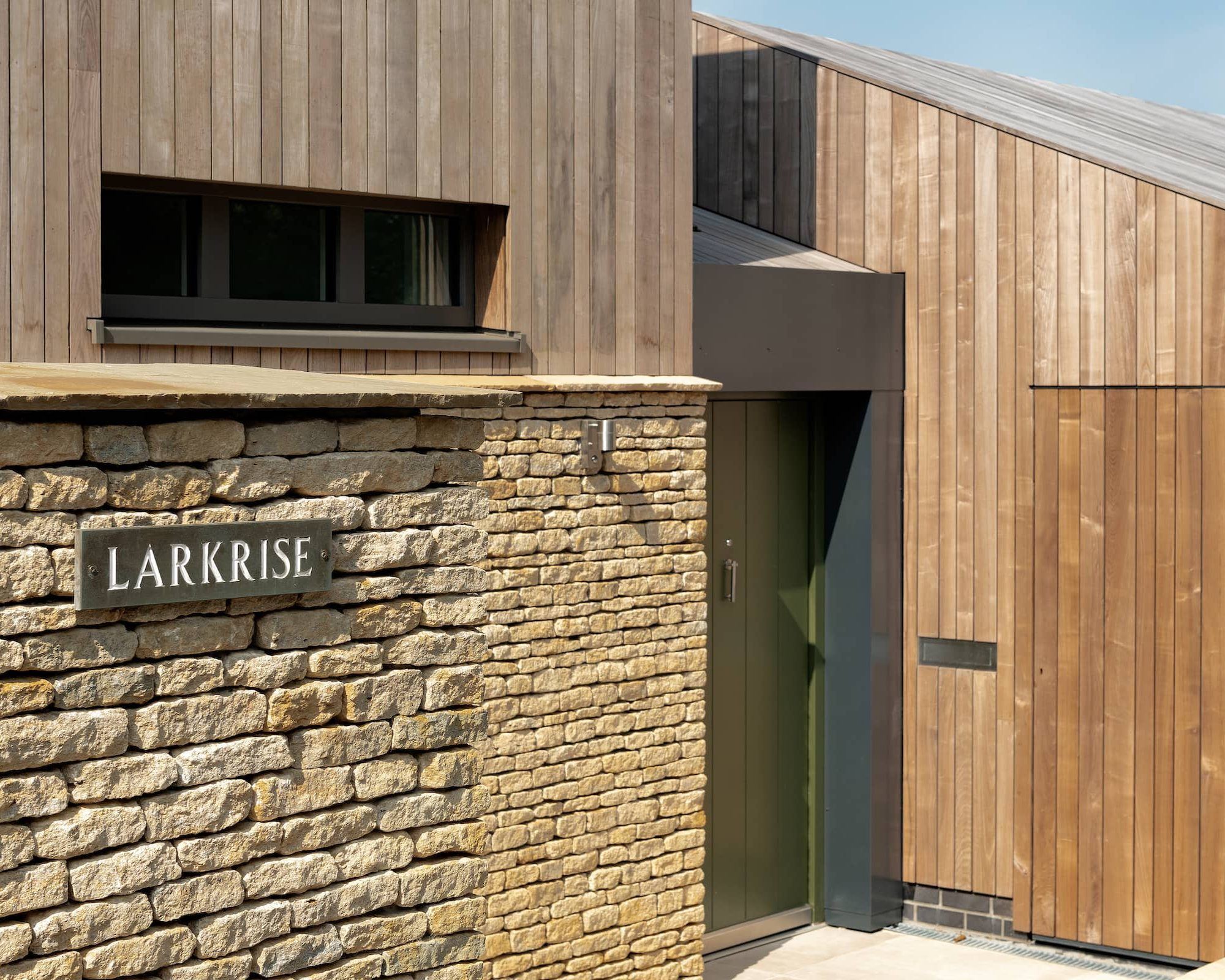
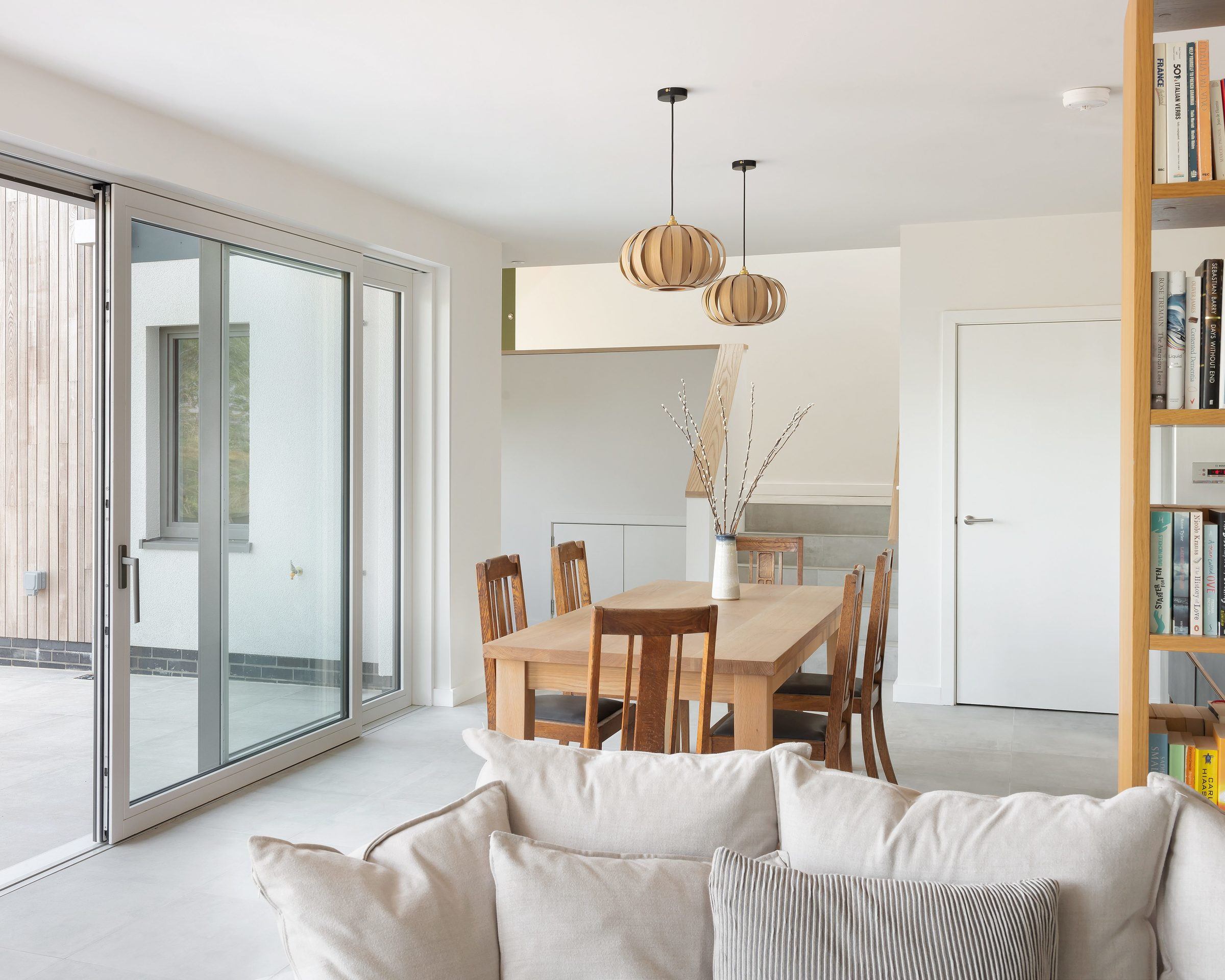
Architectural design: Henry Duncan, Greenheart
Structural design: George Holland, Element Structures
Energy Consultancy: Piers Sadler
Windows/doors: Ecovia
Cladding: Brimstone Ash (Vastern Timber)
Average W/m2.K
- Walls 0.12
- Roof 0.16
- Ground floor 0.15
- Openings 0.89
Airtightness
- 1.1 m3/h/m2
